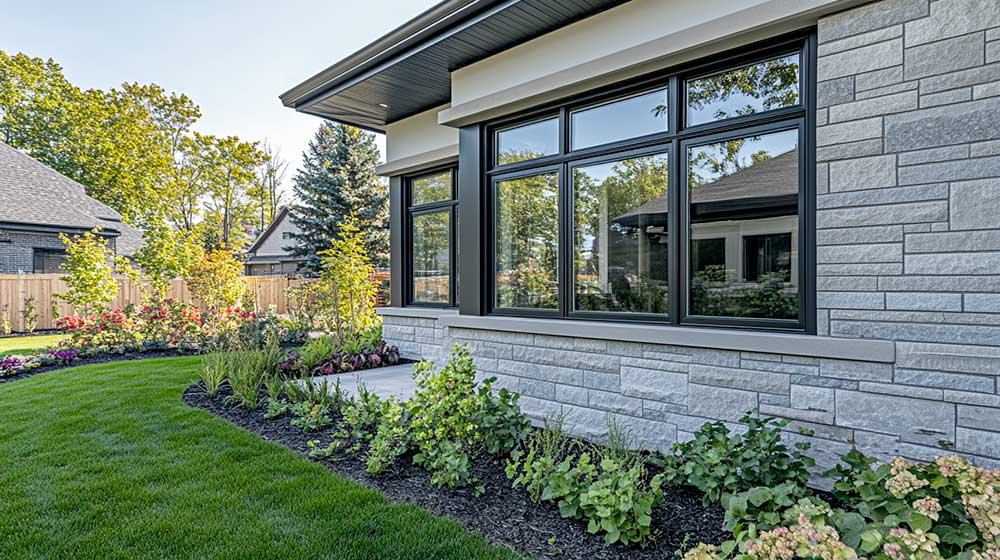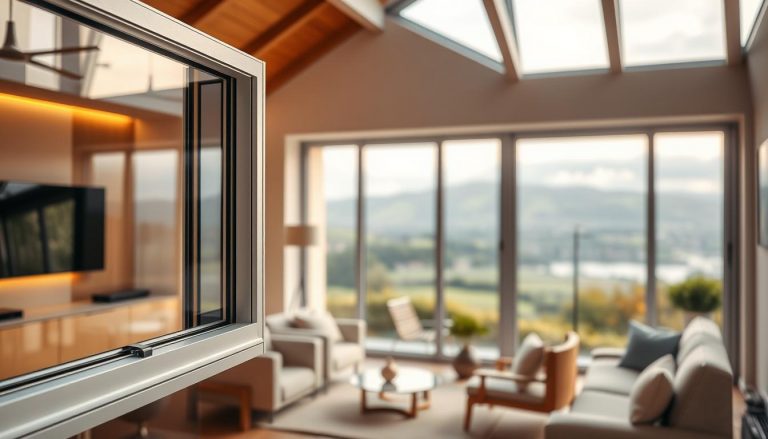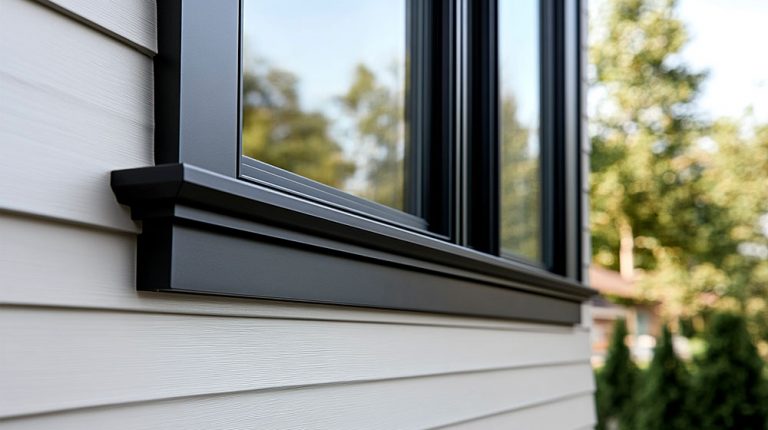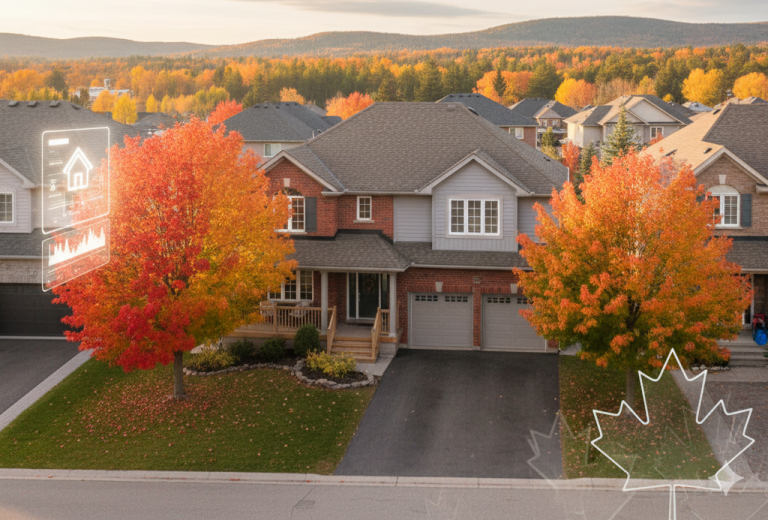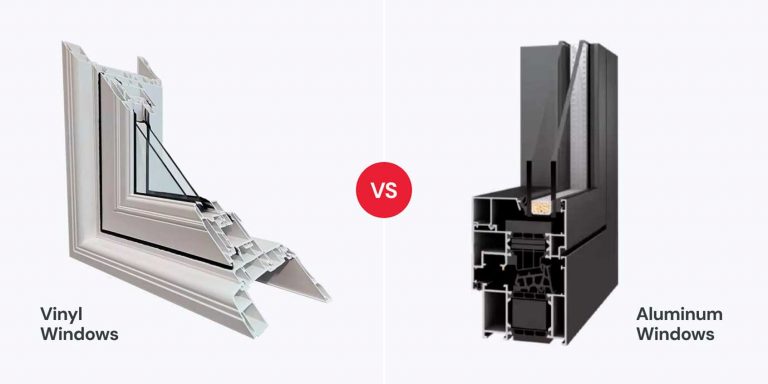Window casing refers to the vertical and horizontal moldings or trim that surround a window frame, serving both functional and aesthetic purposes in your home. This essential component provides structural support, seals gaps to improve energy efficiency, and creates a polished appearance that enhances your property’s curb appeal. Whether you’re planning a renovation or building new, understanding window casings helps you make informed decisions about materials, styles, and installation methods that complement your house’s architectural design whilst protecting against Ontario’s challenging weather conditions.
Window Replacement Near Me
What Is Window Casing and Why Does It Matter?
Window casing is a broader term that encompasses the decorative and protective trim installed around windows to create a finished appearance whilst serving critical functional purposes. Beyond aesthetics, proper casing installation protects your house from moisture infiltration, improves insulation, and adds structural integrity to the window opening.
In Ontario’s climate, window casings provide additional protection against the elements. They seal gaps between the window frame and wall, preventing air leaks that compromise energy efficiency. The casing also protects vulnerable areas around windows from moisture damage, particularly during harsh Canadian winters.
From a design perspective, window casings tie together various architectural elements of your home. They create visual continuity between windows, doors, and other trim work, establishing a cohesive style throughout your property. Whether your house features clean lines of contemporary design or intricate details of traditional architecture, the right casing choice can add character and dimension to any room.
Modern homeowners increasingly recognise that quality vinyl windows paired with appropriate casing systems deliver superior performance and longevity.
Find related services
Interior Window Casing vs Exterior Window Casing
The distinction between interior window trim and exterior window trim lies in their specific functions and material requirements. Interior window casing serves primarily as a finishing element that conceals gaps between the window frame and interior wall surfaces.
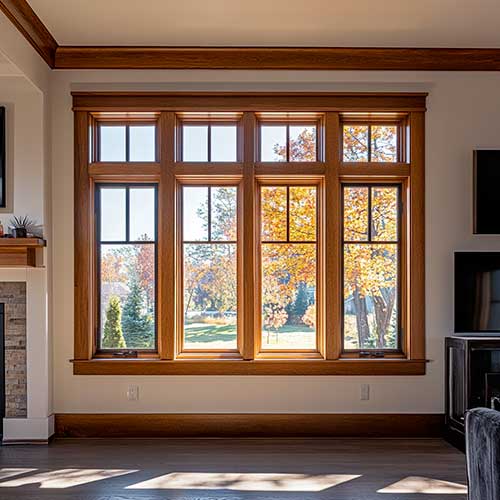
Interior window trim typically features more detailed profiles and comes in various styles ranging from simple flat boards to elaborate multi-piece assemblies. They’re often painted to match or contrast with wall colours, baseboards, and door trim, creating a unified aesthetic throughout your house. The installation process focuses on precision fitting and smooth paint finishes.
Exterior window casing faces different challenges, requiring materials that withstand Ontario’s weather extremes. Outside window casing must resist moisture, temperature fluctuations, UV exposure, and physical impact. This trim typically features simpler profiles that shed water effectively whilst providing robust protection.
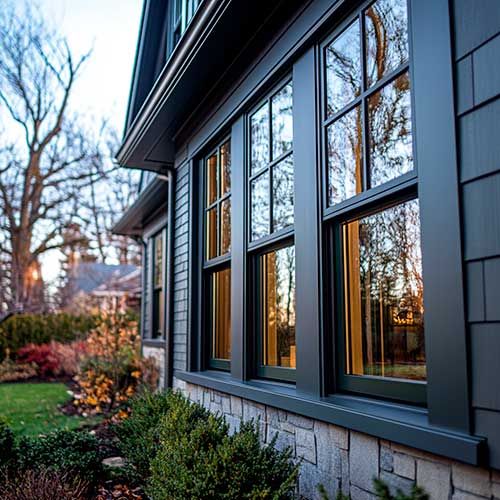
External casings often incorporate drip edges and caulk lines that direct water away from vulnerable areas. When working with wood materials, special attention must be paid to end grain exposure at corners, as these areas are particularly susceptible to moisture penetration.
"When selecting exterior trim, I always advise clients to prioritise weather resistance and low maintenance requirements. Ontario's climate demands materials that can handle freeze-thaw cycles without compromising the window's performance." - Cherry Jian, Sales Consultant
Find related products
Popular Window Casing Materials and Designs
| Material | Durability | Maintenance | Cost | Best Application |
| Vinyl | Excellent | Minimal | Low-Medium | Exterior, modern homes |
| Wood | Good | High | Medium-High | Interior, traditional styles |
| Composite | Very Good | Low | Medium | Both interior/exterior |
Vinyl Window Casing
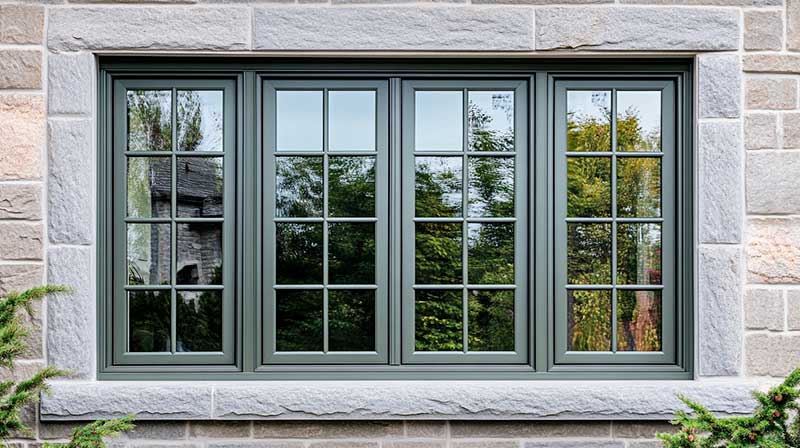
Vinyl window casing represents an increasingly popular choice for Ontario homeowners seeking low-maintenance solutions. PVC window casing resists moisture, doesn’t require regular painting, and maintains its appearance despite exposure to harsh weather conditions. Modern vinyl profiles can mimic traditional wood grain textures whilst offering superior durability.
The manufacturing process allows for consistent dimensions and clean lines that complement contemporary window casing applications. Vinyl casings integrate seamlessly with modern window systems, creating weathertight seals that enhance energy efficiency. Installation involves fewer components than traditional materials, making it easier to attach securely to your house structure.
Quality vinyl casings feature UV-resistant formulations that prevent fading and brittleness over time. They’re available in various colours and can be painted if desired. The material’s flexibility also accommodates minor building movement without cracking at corners or joints.
Contemporary Window Casing Ideas
Window Casing Styles and Ideas vary widely:
- Complete Casing surrounds all four sides of the window and can be simple or layered for more detail, fitting both modern and traditional designs.
- Low Profile Casing is simpler and more subtle, often hidden within the window frame for a minimalist look.
- High Profile Casing is more decorative and layered, making a statement and adding architectural interest.
- Traditional Casing features clean, straight lines and a sleek look, typically installed on the outer parts of the window frame.
Casings can be painted in various colors to complement or contrast with wall colors, enhancing styles from Victorian to modern industrial.
Window Casing Moulding and Trim Options
Understanding the relationship between window casing moulding and other trim components helps create cohesive design schemes throughout your home. Casing represents a specific type of trim that frames window openings, coordinating with baseboards, crown molding, and door casings across various styles.
Window casing trim profiles range from simple flat boards to complex multi-piece assemblies. Traditional styles often feature built-up casings that combine several components:
- Head casing: The horizontal piece across the top
- Side casings: Vertical pieces on each side
- Sill and apron: Bottom components that shed water and provide visual weight
The width of casing elements affects the overall appearance and proportion of windows within a room. Wider casings can make windows appear larger and more prominent, whilst narrow profiles create subtle frames that don’t dominate the space.
| Profile Type | Characteristics | Best For | Maintenance |
| Flat/Ranch | Simple, clean appearance | Modern homes | Easy |
| Colonial | Traditional stepped profile | Heritage styles | Moderate |
| Craftsman | Wide, substantial appearance | Arts & Crafts homes | Moderate |
Installation techniques vary depending on profile complexity. Simple flat casings require basic carpentry skills, whilst intricate details may demand specialised equipment. Proper installation ensures tight joints at corners and professional appearance that enhances your house’s value.
When working with wood trim, careful attention to end grain treatment at corners prevents moisture problems. Sealing exposed end grain with primer or wood preservative before final assembly protects these vulnerable areas.
"The key to successful casing installation is precise measurement and attention to detail. Every corner must be perfect, and all nail holes need proper filling for a professional finish. We always ensure proper access for future maintenance when we attach trim components." - Eugene Siukayev, Project Manager
Installation and Maintenance Considerations
Proper window casing installation requires careful attention to both functional and aesthetic requirements. Professional installation ensures proper sealing, structural attachment, and finishing that maximises performance whilst maintaining access for future maintenance needs.
Installation typically involves:
- Preparation: Remove old trim, clean surfaces, check for damage
- Measurement: Verify dimensions, account for irregularities
- Cutting: Precise cuts ensure tight joints
- Attachment: Securely attach to framing members for stability
- Finishing: Fill nail holes, caulk gaps, prime and paint
When you attach casing components, proper fastening techniques ensure long-term stability whilst allowing for seasonal movement. Corner joints receive particular attention, as these areas experience the most stress and are most visible.
Maintenance requirements vary between materials. Wood trim requires regular inspection and periodic refinishing. Special attention to end grain areas at corners prevents decay. Vinyl and composite materials typically need only occasional cleaning and caulk maintenance.
Regular maintenance tasks include:
- Inspecting caulk lines for gaps
- Checking corners for loose components
- Cleaning surfaces to prevent debris buildup
- Touching up paint as needed
- Ensuring access panels remain functional
"Preventive maintenance is much more cost-effective than major repairs. A little attention each year keeps casings looking great and functioning properly for decades. We design our installations with easy access in mind for routine upkeep." - Daniel Klein, Project Manager
Choosing the Right Window Casings for Your Ontario Home
Selecting appropriate window casings involves balancing architectural style, budget constraints, maintenance preferences, and performance requirements. Ontario’s climate presents unique challenges that influence material selection across various styles and applications.
Consider your house’s existing exterior design when choosing casing styles and materials. Traditional homes often benefit from wood or composite casings that create a unique style, whilst modern architecture may favour clean-lined vinyl options that complement contemporary aesthetics.
Budget considerations extend beyond initial material costs to include installation expenses and long-term maintenance requirements. Whilst wood casings may cost less initially, vinyl options often provide better value over time due to reduced maintenance needs and easier access for periodic cleaning.
With over 14 years of experience serving Ontario homeowners, Total Home Windows and Doors understands the unique requirements of our regional climate. Our engineering background ensures that every window replacement project incorporates appropriate casing solutions that deliver lasting performance across various styles.
Whether you’re upgrading energy efficient windows or completing new construction, proper window casing selection and installation create the foundation for years of trouble-free service and enhanced home value throughout your house.

